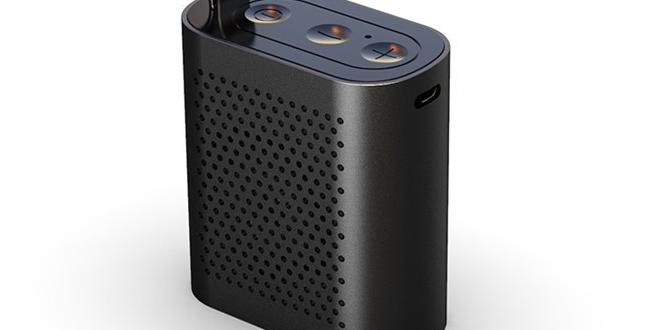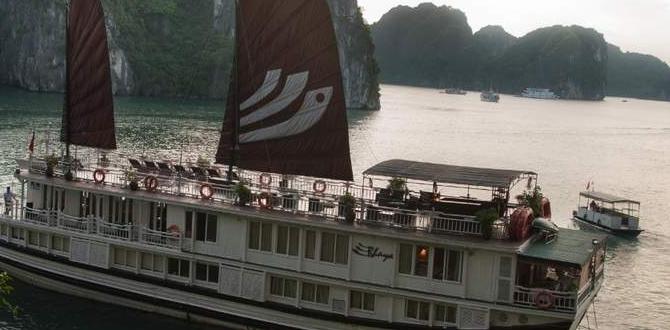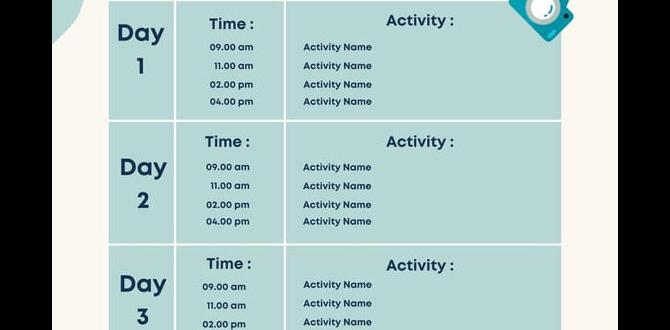Don’t let rain dampen your Atacama Desert adventure! A solid rainy day plan ensures you can still explore unique attractions like geysers, salt flats, and stargazing tours with comfort and safety. Pack smart, know your indoor options, and be prepared for the unexpected for an unforgettable trip.
The Atacama Desert is famous for its clear skies and breathtaking landscapes. Most visitors dream of sun-drenched days and star-filled nights. But what happens when the weather doesn’t cooperate? A rainy day in the Atacama might seem counterintuitive, but it’s a real possibility, especially during certain seasons.
If you’re caught off guard, don’t worry! With a little planning, you can still have an amazing and memorable experience. This guide is here to help you navigate those less sunny moments with confidence.
Understanding Atacama’s Unique Climate
While the Atacama Desert is renowned as one of the driest places on Earth, this doesn’t mean it’s immune to rain. The desert’s hyper-arid nature is precisely why rain, when it falls, can have such a dramatic impact. These events are rare, but they do occur, often linked to phenomena like El Niño.
The most common wetter period is typically between January and March. During these months, the “Altiplanic Winter” can bring significant rainfall to the higher elevations, and sometimes this moisture makes its way down to the lower desert areas.
Knowing when rain is more likely can help you adjust your expectations and packing. However, even outside this window, isolated showers can surprise you. The key is not to let the possibility of rain deter you from visiting this incredible destination. Instead, embrace it as part of the desert’s diverse character.
Why a Rainy Day Plan is Essential
Life happens, and travel plans sometimes need a backup. Even in a desert, a rainy day can disrupt typical outdoor activities like hiking to viewpoints, exploring salt flats, or enjoying daytime tours. Unexpected downpours could lead to:
- Road Closures: Some unpaved desert roads can become impassable quickly when wet, affecting access to certain attractions.
- Limited Visibility: Fog or heavy rain can obscure the stunning desert vistas you came to see.
- Canceled Tours: Tour operators may cancel excursions for safety reasons if weather conditions are severe.
- Discomfort: Being caught in the rain without proper gear can lead to a miserable experience, impacting your overall enjoyment.
Having a plan B transforms potential disappointment into an opportunity for different kinds of exploration. It ensures your trip to the Atacama remains fulfilling, regardless of the weather.
What to Pack for Atacama, Rain or Shine
Packing for the Atacama is all about layers and versatility. Even if you’re not expecting rain, a few key items will serve you well. For a rainy day, these are even more crucial:
Essential Clothing Layers
- Waterproof/Windproof Jacket: A good quality jacket is your first line of defense against rain and the desert’s biting winds, which can be amplified by moisture. Look for something breathable so you don’t overheat.
- Quick-Drying Pants: Avoid heavy cotton. Opt for synthetic materials that dry fast if they get wet.
- Moisture-Wicking Base Layers: These help keep you dry from sweat, a crucial aspect of staying comfortable in fluctuating temperatures, whether it’s raining or sunny.
- Warm Mid-Layer: A fleece or down jacket is essential for cooler desert nights and can be worn under your waterproof jacket.
- Waterproof Hiking Boots: Essential for keeping your feet dry and providing good traction on potentially slippery terrain.
- Extra Socks: Always pack more socks than you think you’ll need, especially moisture-wicking ones.
Protecting Your Gear
- Waterproof Backpack Cover: To keep your electronics, snacks, and extra clothing dry while on the move.
- Dry Bags: For smaller items like your phone, wallet, and camera.
- Plastic Bags: Simple Ziploc bags can be surprisingly effective for protecting electronics or keeping wet clothes separate.
Other Useful Items
- Hat: A wide-brimmed hat is great for sun protection, but a waterproof or quick-drying cap can keep rain off your face.
- Sunglasses: Even on cloudy days, sun can be intense.
- Sunscreen and Lip Balm with SPF: The desert sun is powerful, even through clouds.
- Insect Repellent: While not a major issue, certain conditions can attract insects.
- First-Aid Kit: Always a good idea for any trip.
For families traveling with young children, parents might consider extra protection. If you’re concerned about managing needs on the go, especially during transit or unexpected indoor stays, having absorbent products like adult diapers or child-specific child diapers can offer peace of mind and ensure everyone remains comfortable and stress-free, allowing you to focus on the adventure.
Incredible Atacama Rainy Day Activities
The charm of the Atacama isn’t solely dependent on sunshine. When the skies open up, you can pivot to equally fascinating experiences, often with fewer crowds!
1. Explore the Town of San Pedro de Atacama
San Pedro itself offers a wealth of indoor and covered activities. Wander through its sandy streets (which can get muddy when wet, so waterproof shoes are a must!) and discover:
- Artisan Markets: Browse unique local crafts, textiles, and souvenirs. Many stalls are covered, offering a dry browsing experience.
- Cafes and Restaurants: Cozy up with a hot drink or enjoy a delicious meal. It’s the perfect opportunity to sample local Chilean cuisine.
- The Museum of the Saltpeter Industry (Museo de Meteorito): If available and open, this offers a glimpse into the region’s mining history.
- Church of San Pedro: A beautiful, historic adobe church that provides a quiet, cultural experience.
2. Visit the Aldea de Tulor
This pre-Columbian archaeological site offers insight into ancient Atacameño life. While mostly outdoors, some sections might have partial cover, and the experience can be enhanced by imagining life here centuries ago, even during a drizzle. It’s a good option if the rain is light.
3. Discover the Pukará de Quitor
Similar to Aldea de Tulor, this is an ancient fortress settlement. It’s an outdoor site, but its strategic location and historical significance are compelling even on a cloudy day. Consider visiting if the rain is intermittent, allowing for quick exploration between showers.
4. Immerse Yourself in Local Culture
Many tour operators switch gears on rainy days. Instead of full-day excursions, they might offer:
- Cultural Workshops: Some places might offer introductions to local weaving, cooking, or crafts.
- Planetarium Shows: While the primary stargazing tours are weather-dependent, some observatories or learning centers might have indoor presentations or lectures about astronomy.
- Geothermal Spa Experience: If you’re looking for ultimate relaxation, some local spas or thermal baths might be an option, providing a warm and dry retreat.
5. Embrace the Unique Desert Scenery
Sometimes, a rainy day transforms the desert in unexpected ways. The arid landscape can become lush and vibrant after rain, a phenomenon known as the “Desierto Florido” (Flowering Desert), though this typically requires more sustained rainfall than a single shower. Even without full bloom, the colors of the desert can appear more intense, and the dramatic skies can be breathtaking.
Important Note on Stargazing: Stargazing tours are highly dependent on clear skies. If it’s raining and cloudy, these tours will almost certainly be canceled. Many tour operators offer alternative activities or easy rescheduling options for such cancellations. Always check with your tour provider.
The Geyser del Tatio on a Rainy Day
The Geyser del Tatio is one of the Atacama’s most iconic attractions, a field of geysers best viewed at sunrise. If you plan to visit this high-altitude site (around 4,300 meters or 14,100 feet) on a potentially rainy day, here’s what you need to know:
- Early Departure: Tours still depart very early, often before dawn, to catch the geysers at their most active, as the cold morning air interacts with the hot steam.
- Extreme Cold and Precipitation: At this altitude, rain can quickly turn to sleet or snow, especially during the “Altiplanic Winter.” Temperatures can plummet significantly.
- Essential Gear is Non-Negotiable: You absolutely must have your warmest, waterproof layers, including a hat, gloves, and waterproof boots.
- Visibility: Heavy mist or fog can obscure the geyser field, making the experience less visually stunning. However, the steam from the geysers themselves can create an ethereal, otherworldly atmosphere even in fog.
- Safety First: Tour operators will assess conditions. If it’s deemed unsafe due to extreme weather, tours may be canceled.
- Alternative: If the Geyser del Tatio tour is canceled due to weather, your operator will likely offer a replacement activity or a refund. Don’t hesitate to ask about options.
While less ideal than a clear, crisp morning, a visit to El Tatio on a moody, wet day can offer a unique, dramatic perspective on this powerful natural phenomenon. It’s about embracing the atmosphere, even if the grand vistas are hidden.
Navigating the Salt Flats (Salar de Atacama) in the Rain
The Salar de Atacama is another must-see, famous for its vast salt crusts and flamingo populations. Rain can affect your experience here too:
- Surface Changes: Heavy rain can cover the salt crust with a thin layer of water, creating stunning reflections similar to the famous Salar de Uyuni in Bolivia. This can be a breathtaking opportunity!
- Road Conditions: Access roads to certain points within the Salar, especially those off the main routes, can become muddy and slippery. Tour vehicles are usually equipped to handle this, but caution is always advised.
- Lagoon Levels: Increased water can make lagoons more prominent, potentially attracting more flamingos.
- Visibility of Wildlife: While animals might seek shelter, the enhanced water can make birdwatching in the lagoons easier.
- Comfort: You’ll need your waterproof gear to explore without getting soaked.
A rainy day can actually enhance the visual drama of the Salar de Atacama, turning it into a reflective wonderland, provided the roads remain accessible and safe. Always trust your guide’s judgment regarding safe routes and viewing spots.
Essential Safety Tips for Atacama in the Rain
Safety is paramount, especially when unexpected weather hits a desert environment.
1. Stay Informed About Weather Forecasts
Check local weather reports regularly, but understand that desert forecasts can change rapidly. Apps like AccuWeather or The Weather Channel can provide updates. For a more localized perspective, ask your hotel or tour operator.
2. Follow Your Guide’s Instructions
If you’re on a tour, your guide is your best resource. They are experienced with local conditions and will prioritize your safety. Never venture off-trail or into areas they deem unsafe.
3. Be Cautious on Trails and Roads
Wet sand and mud can be surprisingly slippery. Salt crusts can also become slick. Wear appropriate footwear with good grip and walk carefully, especially on any inclines or declines.
4. Hydration and Altitude
Even in cooler, wetter weather, the Atacama is at high altitude. Dehydration and altitude sickness are still risks. Continue to drink plenty of water and take it easy if you feel unwell. The CDC offers excellent advice on altitude sickness.
5. Prepare for Temperature Drops
Rain often brings a significant drop in temperature, especially at higher elevations. Always have warm layers readily accessible.
Conclusion
The Atacama Desert is a land of extremes, and while its dry climate is legendary, that doesn’t mean rain is entirely out of the question. Far from being a travel-stopper, a rainy day in the Atacama can offer a unique perspective on this incredible landscape.
By packing smart with waterproof gear, understanding the potential impacts on tours and roads, and embracing the alternative indoor or atmospheric outdoor activities, you can ensure your Atacama adventure is complete, rain or shine. With a little preparation and a flexible attitude, you’ll discover that the magic of the Atacama can be appreciated even under cloudy skies.
Frequently Asked Questions
Is it common for it to rain in the Atacama Desert?
No, it’s not common. The Atacama is one of the driest places on Earth. However, rain does occur, especially between January and March during the “Altiplanic Winter,” but sporadic showers can happen at other times.
What should I do if my stargazing tour is canceled due to rain?
Most tour operators are understanding. They typically offer to reschedule your tour for another night if possible, or provide an alternative activity, or offer a refund. Always check their cancellation policy beforehand or discuss options with them directly.
Are roads impassable in the Atacama when it rains?
Some unpaved roads can become very muddy and difficult to traverse after significant rain, potentially leading to temporary closures. Paved roads are generally fine. Tour operators are experienced in navigating these conditions.
What is the “Flowering Desert” (Desierto Florido)?
This is a rare phenomenon where exceptionally heavy rainfall causes dormant flower seeds in the desert soil to germinate and bloom, creating a carpet of colorful flowers. It happens infrequently and requires more than just a typical shower.
Can I still visit the Geyser del Tatio if it rains?
Tours to Geyser del Tatio often still run in light rain, but you must be extremely well-prepared for cold and wet. If weather is severe or poses safety risks, tours will be canceled. Always confirm with your tour operator.
Is it safe to swim in the salt flats if it rains?
The salt flats themselves are not for swimming. However, there are lagoons in the Atacama where you can swim. If it rains heavily, the water levels and conditions of these lagoons can change, so it’s best to check with locals or your guide for current safety and accessibility.
What if I need extra support for personal care during unexpected weather changes?
If you require absorbent products for comfort and security, like adult diapers for travel or child diapers for travel, it’s wise to pack a sufficient supply. This ensures you remain dry and comfortable whether you’re exploring indoors or dealing with unexpected dampness outdoors, making your trip stress-free.






